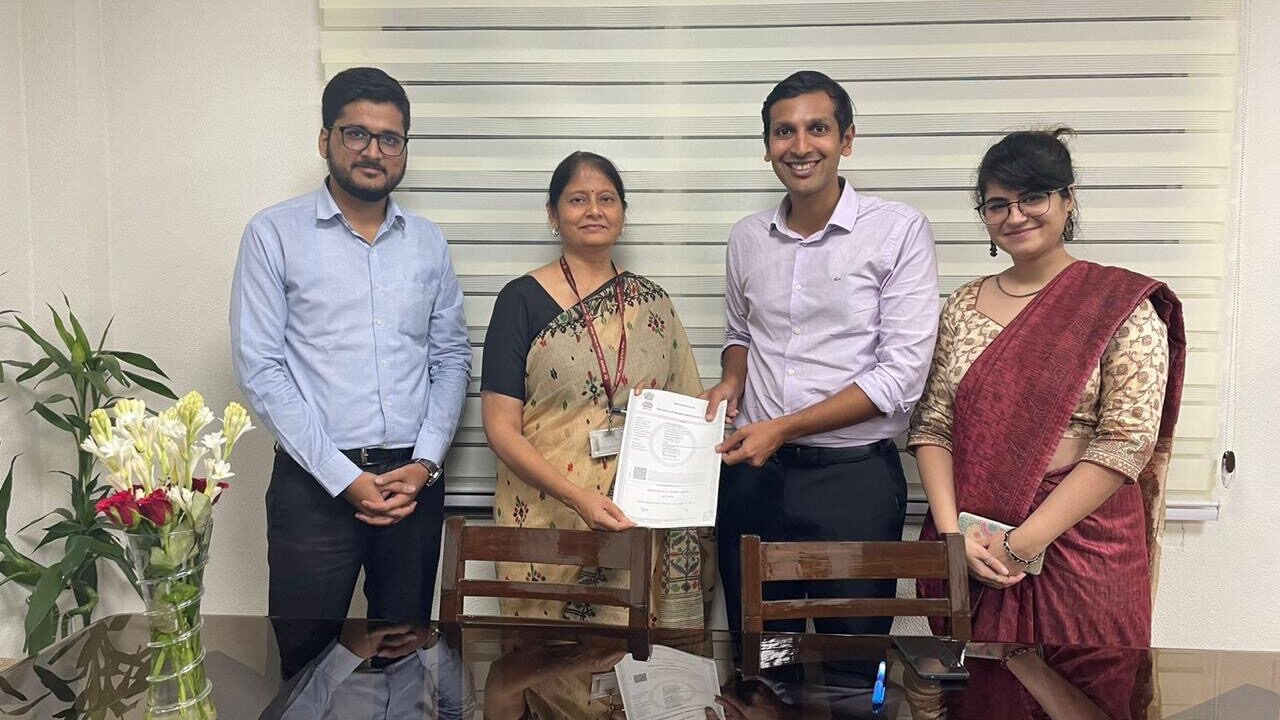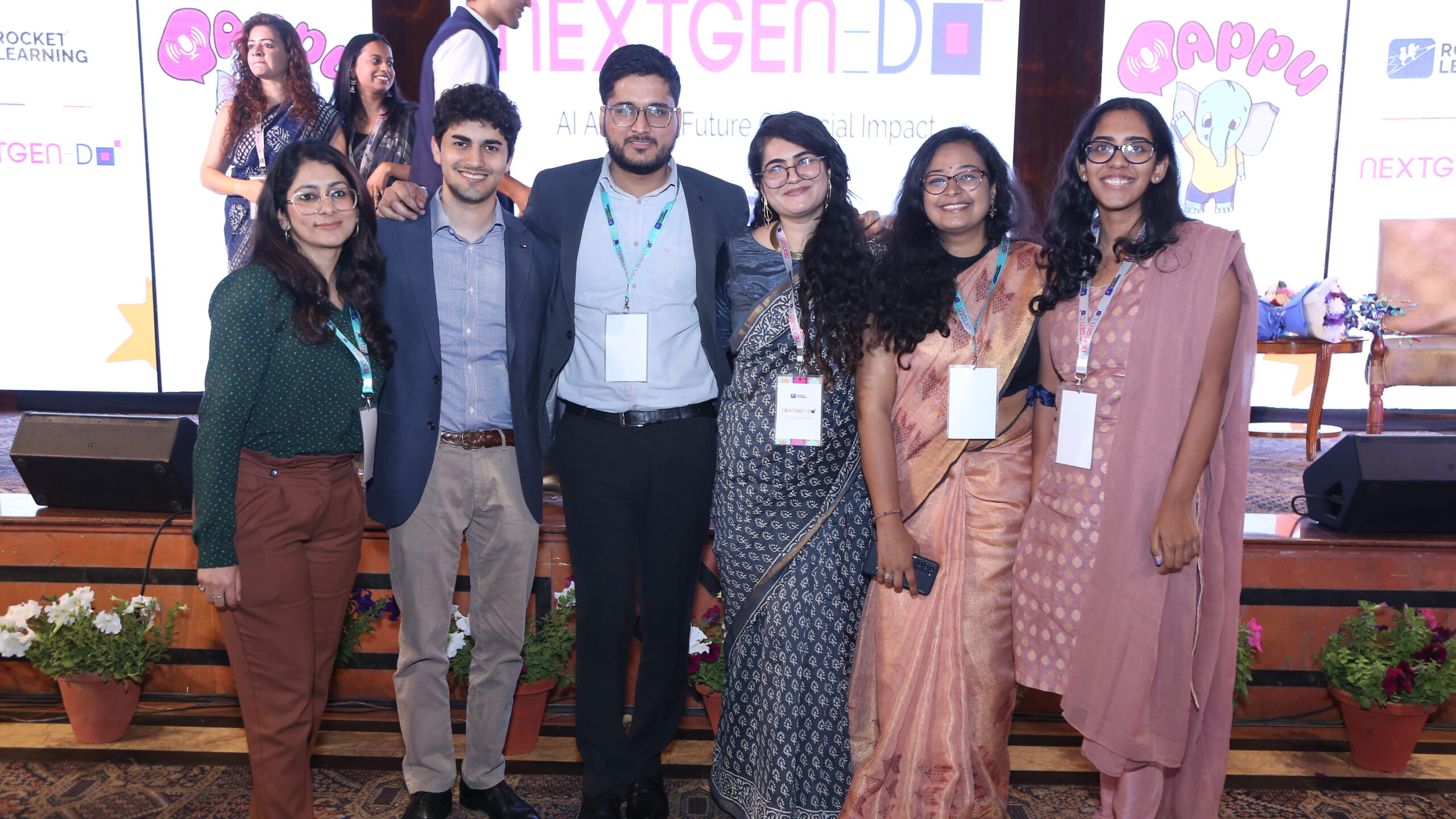– By Vasudha Arabandi, National Initiatives and Communications Associate
As Poshan Bhi Padhai Bhi (PBPB) marks its second anniversary, we sat down with Mr. Jitender Pandey, Senior Manager of the National Initiatives and Policy team—one of the key members from Rocket Learning’s team who has been part of this transformative journey from the very beginning. From laying the groundwork to driving data-driven decisions, he shares insights on how PBPB is reshaping early childhood care and education across India by empowering nearly five lakh Anganwadi workers. In this Drivers of ECCE interview, we explore the challenges, milestones, and future vision of a program dedicated to making a lasting impact on children’s nutrition and learning.


Q: On the 2nd anniversary of PBPB, how are you feeling?
Jitender Pandey: I’ve been associated with this project since the beginning. I joined Rocket Learning in April 2023 and the launch was in May. Before that, some preliminary work had already taken place. Then we started working on the launch event for the project, the Standard Operating Procedures (SOPs), guidelines, the initial meetings, and a lot of groundwork, including number crunching, planning, and envisioning what the model would look like.
To see it translate into what it has become, with almost five lakh Anganwadi workers and 40,000 state-level master trainers being trained so far — is incredibly fulfilling. Now we are also planning for the next round, so there is a real sense of purpose that the last two years have translated into something meaningful, and you feel you have a role to play in a larger cause.
Q: Can you tell us a bit more about what PBPB is? What is it that you do?
If I had to explain to a layperson what Poshan Bhi Padhai Bhi is, I’d say this: our current Anganwadi system has around 14 lakh Anganwadi workers and roughly 9 crore children under the age of six who benefit from this system. What the government has introduced is essentially a capacity-building initiative for Anganwadi workers — so that Early Childhood Care Education (ECCE) can be prioritised, especially given that these workers already have an immense workload providing six different types of services.
What we do is the pre-operational work for the training programme — whether it’s related to project planning, operational planning, how the Standard Operating Procedures (SOPs) will apply, what the training model will look like, and how it will cascade. Cascading essentially means determining who will train whom and what the logistics will look like.
So, we support the government in all the pre-operational aspects needed to operationalise the project. Then the frontline functionaries — the CDPOs, frontline supervisors, Anganwadi workers, and others — take over from there and conduct the training.
The second part involves monitoring project-related data, such as the tracking progress of training in states and pendency, the learning level changes through pre and post training assessment to understand the effectiveness of the training on ground and informing the stakeholders to enable them to take corrective actions in order to ensure effective implementation.We’ve created a dashboard to provide visibility to top-level stakeholders, so they can get a bird’s-eye view of these communities and, in turn, make more informed policy decisions.
Q: How does your previous background as a consultant run into this role?
I think my previous experiences came in handy. In my earlier stints, I was working in mergers and acquisitions, and an investment banking role, where transactions also take around 12 to 18 months from beginning to close.
Similarly, in projects with the government, you always have to be prepared to face very uncertain situations: things might get delayed, some approvals might take longer, or an officer might get transferred or have their priorities re-assigned, etc.
But policy is about patience and my previous experience helped me develop a thick skin for all of this,and to keep moving forward.
Q: How has working with Poshan Bhi Padhai Bhi shaped your view on the role of data in improving children’s education and nutrition in India?
So, the government monitors a lot of data, which is very clear with NFHS, or Poshan Tracker, or a bunch of other surveys, etc. Making sense of it to draw a coherent picture is the challenge and the opportunity.
So, currently also there are a bunch of sources where the data is available, but making it actionable is critical.. So, there is a very clear need for two things – One is a unified data set sort of thing where we can say, “This is the data set for the Government of India,” where we can find that these are the Anganwadi workers, this is the socio-economic background they come from, this is the category, etc.
A unified data set will also help the government to analyse and think through, while framing policies, where the children are lagging or where the children are coming from — basically, this is the sort of income bracket where these children are coming from, and how they are scoring. So a longitudinal survey might help with that.
Q: How do you ensure the data we work with helps the government make practical decisions for children’s welfare?
Yeah, so I think it has been an iterative process. The first dashboard that we created was out of necessity. It was like a postcard — a very small dashboard with only three or four numbers on it. But then we started sharing it with a bunch of stakeholders, and the requests started coming in, realised that this is a requirement multiple stakeholders have — that at the state level, the requirement is different. They want to know how their state is doing and what sort of disaggregation exists at their state level so that they can figure out where to work on.
At the national level, the situation is completely different. So I think it has been a very iterative process, and the current dashboard that we are at would be the sixth or seventh version of the dashboard that we created.
Q: But how do you stick to it? What has been the journey from that postcard to the final dashboard?
I think the initial idea was just to operationalise a dashboard for numbers for oversight on the trainings. But that was when only the master trainers would be trained — CDPOs and supervisors. Then we started looking through the data, and we found that, okay, there is also data available on the educational qualifications of the participants.
One insight that came from it is that roughly half of the supervisors are postgraduates, which was a very surprising insight.e. Everybody thought that some supervisors come from promotions from the Anganwadi worker level, and so the level of education would be relatively lower than postgraduate, and the level of training, the content of the training, would have to be designed accordingly.
But then we realised that 50–60% of people are postgraduates, so the content can be a notch higher – basically, they have the ability and the qualification to deliver — we just need to create the content in a fashion that’s easy to explain and deliver. Obviously, later, it was also about performance metrics — like how states are performing, which states are in the top 10, which are in the top five — to create a sort of positive competitive environment where all the states are motivated to rank in the top 10, encouraged to do better now with visibility of others’ performance.
Q: Can you share an example where the data you worked on led to a breakthrough in your collaboration with the government?
I think specifically, when I was talking about earlier — the pre-training and post-training assessment — in the very initial training, we saw that the jump from pre- to post-training was significantly higher. So that is when we realised, oh, it’s actually working.
In pre-training, people were scoring 70% — or 69%, I think was the number when we checked, which means 10 out of 15 questions people were getting right. Very basic questions on nutrition and ECCE, etc. Post-training, the score was going up to 85 or 90, which is like 13–14 questions they were getting right.
So that is how we also got to know about the quality of training — that, oh, it is actually getting delivered the way we want. I think that was one moment where we realised all this data monitoring effort, analysis and dashboard, are helping to track the objective of the training — the reason for the programme’s initiation.
Q: What opportunities do you see for Rocket Learning and the government to better use data in policy-making?
So I think two years into the programme, we will likely be completing Round 2. When the programme started, it was planned as two rounds of training. So we are ending the first round, which means we have trained almost 5 lakh Anganwadi workers in the country which in itself is a great achievement. There are only 365 days a year and we have managed to train 5 lakh people — that is 1,370 trainings per day!
In terms of how I see Rocket Learning, I think we will have the scope of helping the government in policy framing for future capacity building programmes for Anganwadi workers — and hopefully make this programme into a recurring capacity building initiative for all the frontline functionaries, because that is very, very necessary.
There is a certain recall value that is needed, and two or three years down the line, updating and skill-building will be required for all frontline functionaries, as it is for anybody or any professional.
So for them also, it’s a very essential part. So, I think making it a recurring capacity-building programme is where I believe Rocket Learning can support on the policy side.
Q: Any final words/quotes to describe your work here at Rocket Learning?
I have always wanted to work in the education space. As someone who has received support from a non-profit while I was studying I understand the kind of impact it can have on children. So when I see all these things being translated on the ground, I always feel a sense of achievement and pride — that I can make an iota of impact in a child’s life, and that is what keeps me going daily.